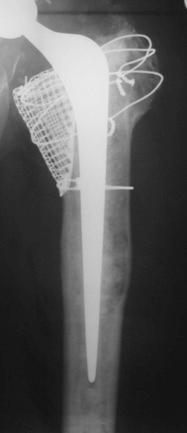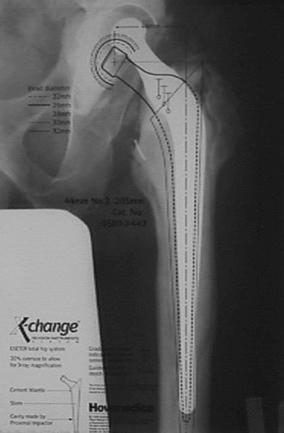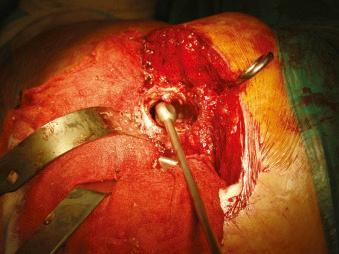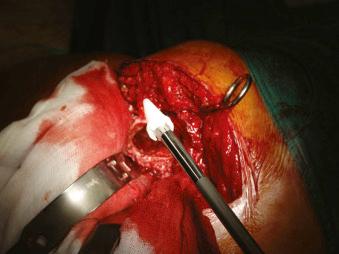Physical Address
304 North Cardinal St.
Dorchester Center, MA 02124
Impaction bone grafting provides restoration of bone stock loss.
It is indicated for any age, but particularly in younger patients.
The surgeon must adequately bypass and protect lytic defects or areas of weakness within the proximal femur with the use of longer stems, strut grafts, or plates, minimizing the risk of periprosthetic fracture.
The procedure should be performed mainly in specialist centers, where a wide range of implants and alternative surgical options are available should they be required.
Impaction bone grafting is a technique-dependent procedure, requiring knowledge of the instrumentation, potential pitfalls of the procedure, and how to address them.
Impaction allografting for reconstruction of bone loss in revision total hip arthroplasty was initially developed for acetabular reconstruction. Experience from Professor Slooff and colleagues from Nijmegen, the Netherlands, who developed impaction bone grafting in the acetabulum in 1979, subsequently contributed to the application of this technique on the femoral side.
Professor Robin Ling had initially impacted a femoral canal with milled bone (1985) and inserted a femoral component without cement that subsided significantly. To address this shortcoming, this technique was revised by using cemented femoral fixation; the senior author (GG) performed the first case of a contemporary femoral revision with impaction bone grafting in Exeter in 1987. With the goal of achieving a stable reconstruction while restoring proximal femoral bone stock loss, this first case of cemented revision with impaction grafting was carried out using canal sizers as distal impactors and an oversized trial stem as the proximal impactor.
Ling and associates examined the quality of bone from a retrieved specimen 3.5 years following femoral impaction grafting that clearly showed cortical healing and a histologically regenerated cortical zone. As a result, in Exeter, this technique has become the procedure of choice in femoral revision surgery ( Fig. 99.1 ).

Impaction bone grafting is indicated as follows:
In situations for which avoiding the use of distal fixation long stems is desirable, as in the younger patient
In revision of cemented hip arthroplasty, in which removal of the preexisting prosthesis and cement mantle leaves behind a smooth and sclerotic endosteal surface. Use of this technique provides an interface for mechanical interlocking of cement, with the added benefit of restoring bone stock.
In situations in which the minimum necessary length of scratch fit cannot be attained for the use of fully coated cementless stems
In situations in which fixation with a conical fluted stem cannot be achieved owing to a reverse cone shape of the femoral canal below the isthmus
In situations in which the medullary canal is greater than 18 mm, increasing the risk of thigh pain with the use of cementless stems
Although no absolute contraindications are known, the technique may not be ideal for the very elderly or medically unfit patient for whom recovery of bone stock is unnecessary and a relatively shorter procedure is desirable.
Although we perform the procedure in two stages in the presence of infection, there are surgeons who have experience with a single-stage revision for infection.
Where complete proximal femoral bone loss exceeds 10 cm, reconstruction with femoral impaction grafting becomes very complex, in which case other alternatives to femoral reconstruction are recommended.
Ruling out of infection is carried out in the conventional way. When suspicion of infection is raised by investigations or on clinical grounds, then a preoperative hip aspiration must be performed.
Preoperative radiographs must be of good quality and must extend to well below the existing stem tip or cement mantle, whichever is most distal.
Detailed templating will indicate the stem length, size, and offset as well as the position of the threaded revision plug, which should be placed 2 cm distal to the tip of the stem. The prosthesis must bypass the most distal major defect, such as a lytic lesion or a cortical defect involving more than 50% of the femoral circumference on two radiographic views, by at least 2 cortical diameters. Femoral impaction grafting system revision instruments allow for implantation of varying offsets and lengths ( Fig. 99.2 ).

Donor allograft femoral heads or condyles and strut grafts, if necessary, should be ordered in advance from a bone bank. Femoral reconstruction metal mesh, multifilament cables, cerclage wires, and metal plates should be available.
After removal of all debris, femoral component, and cement, the femoral canal diameter is determined by the largest reamer used during debridement and is checked with a canal sizer ( Fig. 99.3 ). An appropriately sized plug is then fixed to a threaded guide wire ( Fig. 99.4 ) and is inserted down the canal using the revision plug introducer while the plug is positioned to the templated depth. This should be 2 cm distal to the tip of the stem, allowing for a short column of well-impacted graft chips distal to the prosthesis.


Become a Clinical Tree membership for Full access and enjoy Unlimited articles
If you are a member. Log in here